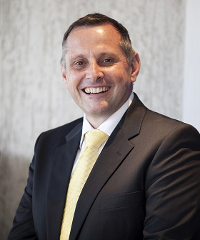How Philips is adapting its global strategy to better address the African market
For global companies looking to be successful in African markets, an understanding of its unique business environment and consumer behaviour is vital. And it is increasingly being acknowledged that business models that work in other regions of the world, do not always work in African markets.
One company that has been adapting its global strategy to better address specific needs in African countries is the Netherlands-based technology brand, Philips.
“Up until 2011 a lot of our focus as a company was on how do we use our global portfolio generically in Africa,” said JJ van Dongen, senior vice president for Philips Africa.
However, he added today the company has adopted a number of strategies to make its global portfolio more relevant for the African market.
A focus on off-the-grid communities
Philips has identified a need to develop its global portfolio’s products for off-grid communities. Van Dongen noted around 600 million people, about 60% of the African population, live off-the-grid, and the company’s lighting, healthcare and consumer portfolios need to address this.
For example, the company has been investing in adapting its healthcare products to meet the needs of rural clinics, rather than just the large hospitals.
Last year Philips established its Africa Innovation Hub in Nairobi to focus on research and development of new solutions to tackle challenges such as access to lighting and affordable healthcare.
By October, the Innovation Hub had launched its first Community Life Centre in Kenya to provide products and services to strengthen primary healthcare and community development. Members of the community can also purchase products such as home solar lighting, smokeless stoves, and purified water.
Making products financially accessible
Philips has also looked into how it can adapt its global business model to be more financially accessible to the majority of consumers on the continent.
“If you have a US$60 product, how do you support a consumer earning $1 or $2 a day to buy that product? In essence it’s about finding ways of making that product financially accessible to that individual,” explained Van Dongen.
He added while a kerosene lamp will cost a consumer more than solar lighting over a course of a year, many consumers do not have enough money to pay for solar lighting products upfront.
“If they go for solar lighting it will probably cost them $10 to $20. But to pay the $20 upfront may be difficult for them. So it’s about finding a financial solution – either through microfinance and working with banks, or working with women’s groups and church groups, or physically having a pay-as-you-go methodology to actually allow consumers to buy it in instalments, as opposed to having to pay upfront for it.”
According to Van Dongen, Philips has been testing these payment strategies in East Africa and is looking at expanding them elsewhere on the continent, not only for consumers but also for governments.
“A government may have many clinics that it wants to upgrade. How do you make it financially viable for a government to actually upgrade its rural primary healthcare system in a feasible and economically viable method? So we are working with governments in terms of trialling [payment options].”
Local-for-local manufacturing
While most of the company’s products are imported from elsewhere, Van Dongen said Philips does manufacture some items locally where there is a specific African demand for them.
“We always look at ways more effective than importing products. Obviously as a company with a global footprint, we look at centralisation of our manufacturing facilities. But there are case-by-case scenarios where it addresses the needs of a consumer in a particular market to manufacture locally.”
One example is woodstoves which Philips manufactures in southern Africa. “It’s a very unique African product which we have developed and rolled out, and we are manufacturing for the local needs there, and also for East Africa.”
Philips has also found a partner in Egypt to manufacture irons and blenders in the market. “So we look at what is relevant in a particular market. West and East Africa are also under consideration,” continued Van Dongen.
“But it’s very dependent on specific markets and specific products.”


